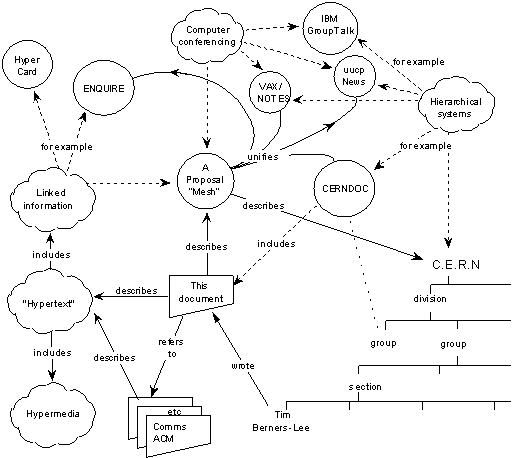So, in my scheme how can we learn something about you?
We can't simply do:
-- first define context:
sa: context learn you
sa: |you> => |Fred>
sa: age |you> => |age: 29>
Here is why:
sa: dump
----------------------------------------
|context> => |context: learn you>
|you> => |Fred>
age |you> => |age: 29>
----------------------------------------
We really wanted Fred to be 29, not "you".
So, it took some coding! but we have a new construct:
OP SUPERPOSITION-1 => SUPERPOSITION-2
which maps to:
OP KET => SUPERPOSITION-2
for all kets in SUPERPOSITION-1
Example:
-- see the current definition of "you"
sa: "" |you>
|Fred>
-- so it is "Fred"
-- let's learn his age:
sa: age "" |you> => |age: 29>
-- see what we know:
sa: dump
----------------------------------------
|context> => |context: learn you>
|you> => |Fred>
age |you> => |age: 29>
age |Fred> => |age: 29>
----------------------------------------
-- success!
Now, swap "you" to "Sam", and learn his age:
sa: |you> => |Sam>
sa: age "" |you> => |age: 34>
sa: dump
----------------------------------------
|context> => |context: learn you>
age |you> => |age: 29>
|you> => |Sam>
age |Fred> => |age: 29>
age |Sam> => |age: 34>
----------------------------------------
-- again, success!
Now for another example, learn daily closing times for a shop:
sa: context shop closing time
sa: |weekday: _list> => |Monday> + |Tuesday> + |Wednesday> + |Thursday> + |Friday>
sa: |weekend: _list> => |Saturday> + |Sunday>
sa: closing-time "" |weekday: _list> => |time: 6pm>
sa: closing-time "" |weekend: _list> => |time: 4:30pm>
sa: dump
----------------------------------------
|context> => |context: shop closing time>
|weekday: _list> => |Monday> + |Tuesday> + |Wednesday> + |Thursday> + |Friday>
|weekend: _list> => |Saturday> + |Sunday>
closing-time |Monday> => |time: 6pm>
closing-time |Tuesday> => |time: 6pm>
closing-time |Wednesday> => |time: 6pm>
closing-time |Thursday> => |time: 6pm>
closing-time |Friday> => |time: 6pm>
closing-time |Saturday> => |time: 4:30pm>
closing-time |Sunday> => |time: 4:30pm>
----------------------------------------
More later!
Update: with my new pretty print table code, we can now do this:
sa: table[day,closing-time] ("" |weekday: _list> + "" |weekend: _list>)
+-----------+--------------+
| day | closing-time |
+-----------+--------------+
| Monday | time: 6pm |
| Tuesday | time: 6pm |
| Wednesday | time: 6pm |
| Thursday | time: 6pm |
| Friday | time: 6pm |
| Saturday | time: 4:30pm |
| Sunday | time: 4:30pm |
+-----------+--------------+
Update: we can tidy up the operator names a little so they are more like natural English:
list-of |week days> => |Monday> + |Tuesday> + |Wednesday> + |Thursday> + |Friday> list-of |weekend days> => |Saturday> + |Sunday> closing-time list-of |week days> => |time: 6pm> closing-time list-of |weekend days> => |time: 4:30pm> table[day,closing-time] list-of (|week days> + |weekend days>) +-----------+--------------+ | day | closing-time | +-----------+--------------+ | Monday | 6pm | | Tuesday | 6pm | | Wednesday | 6pm | | Thursday | 6pm | | Friday | 6pm | | Saturday | 4:30pm | | Sunday | 4:30pm | +-----------+--------------+Update: we can also make the learn-you more like natural English:
name-of |you> => |Fred> age-of name-of |you> => |age: 29> name-of |you> => |Sam> age-of name-of |you> => |age: 34> dump ---------------------------------------- |context> => |context: sw console> name-of |you> => |Sam> age-of |Fred> => |age: 29> age-of |Sam> => |age: 34> ----------------------------------------Update: another more interesting learning indirectly example. This time one extra operator deep:
the-third |US President> => |Thomas Jefferson> the-party-of the-third |US President> => |party: Democratic-Republican> the-dissolution-date-of the-party-of the-third |US President> => |year: 1825> sa: dump ---------------------------------------- |context> => |context: sw console> the-third |US President> => |Thomas Jefferson> the-party-of |Thomas Jefferson> => |party: Democratic-Republican> the-dissolution-date-of |party: Democratic-Republican> => |year: 1825> ----------------------------------------ie, inching ever closer to natural language. And I think we can get even closer still!

